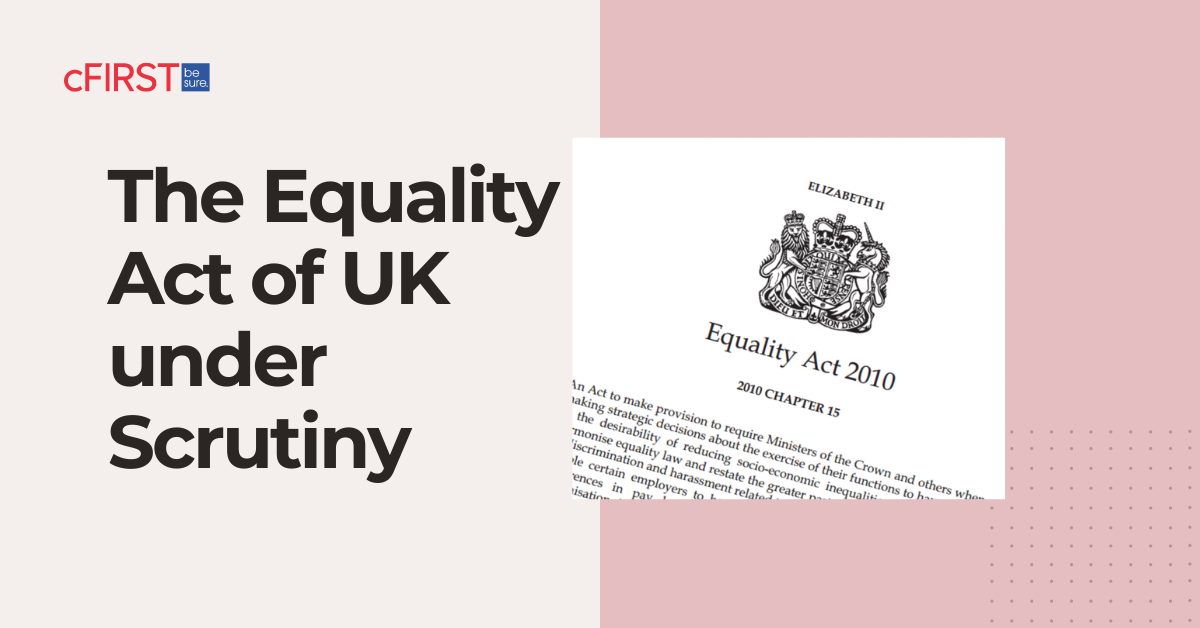The Equality Act of 2010 was a landmark legislation designed to create a fairer UK by protecting people from discrimination. It consolidated a patchwork of anti-discrimination laws into a single, comprehensive framework. The European Convention on Human Rights (ECHR) provides additional protection against discrimination, allowing individuals to seek redress when domestic legal avenues are exhausted.
However, the reality of discrimination is far more complex than the law can often capture. For instance, it does not explicitly address socioeconomic status, significantly influencing life chances and opportunities. The legislation omits the intersectionality of multiple discriminations that can converge to create compounded disadvantages. Moreover, the digital divide — the disparity in access to and use of technology—has exacerbated inequalities across various groups, raising questions about the adequacy of existing legal frameworks.
A recent survey revealed that approximately 7.3 million adults have encountered workplace prejudice based on their identity, including characteristics such as being Asian or LGBTQ+. The road ahead demands a critical examination of the Equality Act’s implementation, its limitations in addressing emerging forms of discrimination, and the urgent need for complementary measures.
Understanding the Equality Act 2010
The Equality Act of 2010 consolidates 116 pieces of anti-discrimination legislation into one cohesive framework. This unification aimed to streamline legal processes, enhance clarity for individuals and organizations, and strengthen protections against unfair treatment.
By combining the Equal Pay Act, the Race Relations Act, and the Sex Discrimination Act, the Equality Act created a more coherent and accessible legal foundation for promoting equality of opportunity. However, it overlooks the compounded disadvantages faced by people who experience multiple discriminations, a phenomenon known as intersectionality.
Protected Characteristics
Central to the Equality Act is its delineation of nine protected characteristics:
The act forbids direct and indirect discrimination, harassment, and victimization based on these characteristics in various areas of life, including:
While this comprehensive list provides substantial protection, it omits crucial factors like socioeconomic status and the digital divide, which can intersect with protected characteristics to create compounded disadvantages. While the ECHR provides additional protections, its role in the Equality Act is supplementary rather than overlapping.
Public Sector Equality Duty
The Public Sector Equality Duty—a part of the Equality Act — imposes a legal obligation on public bodies to consider equality in all activities. This duty requires public bodies to eliminate discrimination, and advance equal opportunity. While the PSED can drive significant improvements in public services, its effectiveness is subject to robust implementation and monitoring.
Making Equality Happen: 4 Implementation Macros
The Equality Act of 2010 notably omits socioeconomic status as a protected characteristic, limiting legal protection against discrimination based on class or background. An attempt was made to address this through a public sector duty to reduce socioeconomic inequalities. However, this duty was ultimately scrapped due to concerns over bureaucratic burdens on businesses.
This omission is problematic given the intersection of socioeconomic status with other protected characteristics, such as disability and age. This overlap often exacerbates inequalities, leading to disproportionate impacts on particular groups.
The act also addressed multiple discrimination, but its effectiveness remains contested. The act primarily focuses on additive or cumulative forms of discrimination, where the effects of two or more protected characteristics are added together.
There is a need for a shift towards a stigma-led approach, focusing on the social and cultural factors that contribute to discrimination based on multiple identities. This approach would require a fundamental rethinking of anti-discrimination law to reflect the experiences of individuals facing various forms of disadvantage.
The Equality Act provides individuals the right to legal recourse against discrimination through employment tribunals and county courts. However, the findings indicate that individuals often face difficulties asserting their rights because of the fear of retaliation, complex legal procedures, and financial constraints deterring many from pursuing legal action.
The act is less effective in addressing subtle and systemic inequality that can be deeply ingrained within organizational cultures. Complementing the law with robust enforcement mechanisms, public education campaigns, and initiatives promoting cultural change is essential.
It refers to the unequal access to and utilization of digital technologies across different segments of society. This disparity often stems from socioeconomic factors, geographic location, education levels, and age. The rapid merger of technology into aspects of life has amplified the consequences of the digital divide.
Limited internet access can hinder educational opportunities, job prospects, and access to essential services. The digital divide disproportionately impacts women, limiting their capability to participate fully in the digital economy and hindering gender equality. Addressing the digital divide requires expanding broadband infrastructure, providing digital literacy training, and implementing policies that promote digital inclusion.
Conclusion
The Equality Act of 2010 is a landmark achievement in the UK's pursuit of a more just and equitable society. The act has created a powerful and accessible legal framework for challenging discrimination and upholding fairness. However, the insidious nature of systemic biases, the intersectionality of multiple protected characteristics, and the rapid evolution of technology challenge the Equality Act's capacity to provide comprehensive protection
By understanding the challenges and opportunities, we can work towards a future where equality is a reality for all. To achieve this, policymakers must prioritize research, data collection, and public engagement to understand the multifaceted nature of discrimination better.






